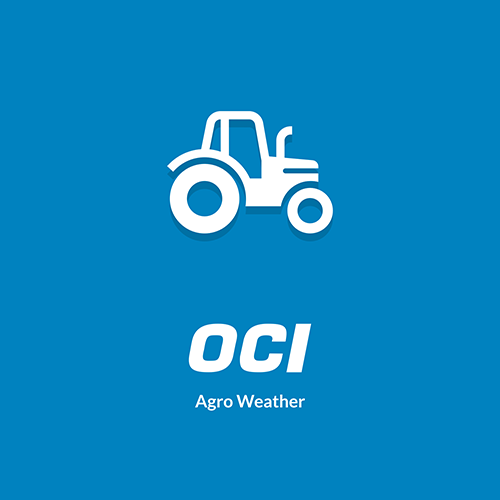Kickstart your Oilseed Rape (OSR) growth this spring
Careful spring management of oilseed rape (OSR) is vital. It sets the foundation for the crop’s health and yield potential, enabling it to better withstand pest pressure and variable weather conditions.
This blog provides practical advice on how to maximise value from spring oilseed rape crops. It covers key management decisions, such as the best conditions and timings for drilling, guidance on selecting high-performing seed varieties, and outlines effective nutrition strategies to enhance your OSR crop’s performance
Tips for preparing OSR seedbeds
 Spring oilseed rape thrives in a well-prepared seedbed that’s fine, firm, and moist. A wet winter can pose significant challenges to achieving this – soil compaction and waterlogging impede proper root development and aeration, and make it difficult to achieve the fine tilth necessary for optimal seed-to-soil contact.
Spring oilseed rape thrives in a well-prepared seedbed that’s fine, firm, and moist. A wet winter can pose significant challenges to achieving this – soil compaction and waterlogging impede proper root development and aeration, and make it difficult to achieve the fine tilth necessary for optimal seed-to-soil contact.
Top tips:
- Ensure adequate drainage as waterlogged conditions can severely hamper growth.
- It is important to consider soil pH and nutrient levels too, which can be determined by soil testing. The ideal pH for oilseed rape is between 6 and 7.
- If you need to lime your fields, to increase the pH level, do so well ahead of drilling to allow the soil to adjust.
Making decisions on OSR seed varieties
Choose an oilseed rape variety that best suits your farm’s geographic location, soil type, and the prevalent weather patterns. Consider disease resistance, especially to Phoma stem canker and Sclerotinia, which are two fungal diseases that pose a substantial threat to oilseed rape crops. Phoma stem canker thrives in cooler, wet conditions, therefore the disease risk is exacerbated by early sowing. It is also recommended to look for varieties with good spring vigour, to help establish a robust crop capable of withstanding pest pressure and competing effectively with weeds. Ideally choose those with a proven track record of high oil content and yield in UK trials.
Optimal OSR drilling conditions
Timing and soil temperature are critical for drilling spring oilseed rape. Aim to sow as soon as conditions allow, typically when soil temperatures consistently reach 7°C at a depth of 30mm. This is the temperature threshold at which the seeds of oilseed rape can germinate effectively, promoting vigorous early root and shoot growth. In the UK, these conditions usually occur from late February through March. Spring-sown oilseed rape will not have as long a vegetative period before the onset of summer, making rapid establishment crucial.
Advice on nutrition and fertiliser application for OSR crops
 Nutrition is vital for optimal oilseed rape growth in spring. Nitrogen is the key nutrient and fertilisers such as Nutramon CAN should be applied in split doses, to align nitrogen availability with the crop’s growth stages and its changing nitrogen uptake requirements. This helps ensure the plant has sufficient access to nitrogen when it’s most needed for growth spurts – such as leaf development and flowering. Splitting nitrogen applications also helps to prevent leaching into waterways and excessive vegetative growth, which can make plants prone to lodging (falling over). The first application of nitrogen-based fertiliser to OSR crops should occur at the rosette stage, followed by additional applications as needed based on crop growth and soil nutrient levels. Always consult your agronomist for timely advice on when to apply fertiliser. Don’t overlook sulphur, which benefits protein synthesis and oil production. Consider using a compound fertiliser that includes both nitrogen and sulphur to simplify applications.Find out more about our integrated nitrogen-sulphur fertiliser, Dynamon, here.
Nutrition is vital for optimal oilseed rape growth in spring. Nitrogen is the key nutrient and fertilisers such as Nutramon CAN should be applied in split doses, to align nitrogen availability with the crop’s growth stages and its changing nitrogen uptake requirements. This helps ensure the plant has sufficient access to nitrogen when it’s most needed for growth spurts – such as leaf development and flowering. Splitting nitrogen applications also helps to prevent leaching into waterways and excessive vegetative growth, which can make plants prone to lodging (falling over). The first application of nitrogen-based fertiliser to OSR crops should occur at the rosette stage, followed by additional applications as needed based on crop growth and soil nutrient levels. Always consult your agronomist for timely advice on when to apply fertiliser. Don’t overlook sulphur, which benefits protein synthesis and oil production. Consider using a compound fertiliser that includes both nitrogen and sulphur to simplify applications.Find out more about our integrated nitrogen-sulphur fertiliser, Dynamon, here.
How to manage pest, weed and disease threats in OSR crops
During spring, keep a vigilant eye on pests, such as flea beetles or aphids, that can cause significant damage to young oilseed rape plants. Employ an integrated pest management approach, combining cultural tactics, biological controls, and chemical options if necessary. Monitor for diseases like light leaf spot and powdery mildew, and be ready to apply fungicides during early growth stages if required. Effective weed control begins early, as spring OSR competes poorly with weeds during establishment. Pre-emergence herbicides can be useful, followed by post-emergence treatments as needed. Always adhere to the resistance management guidelines to prevent herbicide resistance development.
Conclusion – Maximising spring OSR growth
Spring oilseed rape has the potential to be a highly rewarding choice for UK farmers, offering a lucrative break crop option and benefiting the following cereal crops. By paying close attention to soil preparation, drilling conditions, seed selection, timely nutrition and pest management, you can maximise the value from your spring oilseed rape.


